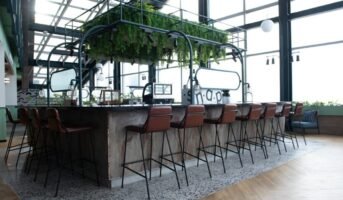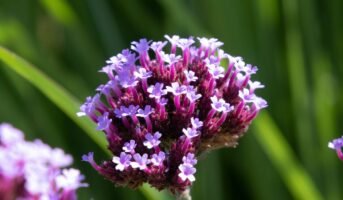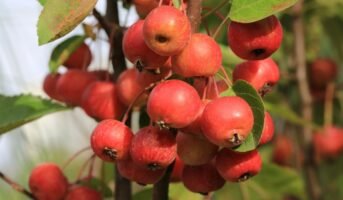Timber trees are trees grown for their wood, which can be used for various purposes, such as construction, furniture, and paper production. The most common timber trees are pine, oak, maple, and spruce.
The cultivation of timber trees has a long history, dating back to ancient civilisations such as the Egyptians, Greeks, and Romans. However, in the 16th century, the systematic cultivation of timber trees began with modern forestry techniques.
In the 18th and 19th centuries, the demand for timber grew rapidly, especially in Europe and North America, leading to large-scale deforestation and unsustainable forestry practices. However, in the 20th century, the importance of sustainable forestry and the conservation of natural resources became widely recognised, leading to modern forest management practices and certification schemes.
Today, timber tree cultivation plays a vital role in meeting the world’s demand for wood products while protecting and preserving the forests for future generations.

Source: Pinterest
Timber trees: Characteristics
Timber trees are typically characterised by their large size, straight trunks, and dense, durable wood suitable for construction, furniture, and other applications. Here are some common characteristics of timber trees:
- Size: Timber trees are generally tall, with an average height of 60-80 feet, although some species can grow up to 100 feet or more.
- Straight trunk: Timber trees have straight, cylindrical trunks with a uniform diameter from top to bottom, which makes them suitable for sawing into lumber and other wood products.
- Hardwood vs Softwood: Timber trees can be classified into two broad categories: hardwood and softwood. Hardwood trees are deciduous and have broad leaves, while softwood trees are evergreen and have needles or scales instead of leaves.
- Wood density: Timber trees have dense, heavy wood that is strong and durable, making them ideal for use in construction and furniture-making.
- Growth rate: Timber trees grow relatively slowly, taking several decades or more to reach maturity. However, some softwood trees, such as pine and spruce, can grow more quickly.
- Environmental factors: Timber trees grow best in areas with moderate to high rainfall and temperatures, although some species can tolerate drought or extreme temperatures.
- Harvesting: Timber trees are typically harvested when they reach maturity, which can take several decades. Sustainable forestry practices can help ensure timber forests’ long-term health and productivity.
- Adaptability: Timber trees can be grown in various climates and soil types, making them adaptable to many different environments.
- Long lifespan: Timber trees can live for many decades, even centuries, in some cases. It means that they can continue to produce valuable wood for generations, making them a sustainable resource for building and other purposes.
Timber trees: Types
There are many types of timber trees around the world, but here are some examples of the most commonly used ones:
- Pine: Pine trees are a popular choice for timber due to their fast growth and straight trunks. They are commonly used in construction, furniture, and paper production.
- Oak: Oak trees are known for their durability and strength, making them ideal for furniture, flooring, and architectural millwork.
- Teak: Teak trees are highly valued for their strength, durability, and water resistance and are commonly used in outdoor furniture and boat building.
- Mahogany: These trees are known for their beauty and strength and are used in high-end furniture, cabinetry, and decorative veneers.
- Cedar: Cedar trees have a natural insect and rot resistance and are often used for outdoor furniture, decking, and siding.
- Maple: Maple trees are known for their hardness and beauty and are often used in flooring, furniture, and cabinetry.
- Cherry: Cherry trees produce a beautiful, reddish-brown wood that is often used in furniture, cabinetry, and decorative veneers.
- Walnut: Walnut trees produce a dark, rich wood that is highly valued for its beauty and durability. It is often used in furniture, cabinetry, and decorative veneers.
- Ash: Ash trees are known for their strength and flexibility and are often used in sports equipment, furniture, and flooring.
- Eucalyptus: Eucalyptus trees are fast-growing and produce strong, durable wood that is often used in construction, flooring, and furniture.
Note: These are just a few examples of the many trees commonly used as timber trees. The specific types of timber used for construction can vary depending on the location and the industry’s particular needs.
Timber trees: Uses
Timber trees have a wide range of uses in various industries and applications. Here are some of the expected benefits of timber trees:
- Construction: Timber trees are commonly used in construction to build houses, commercial buildings, bridges, and other infrastructure. They are used for making beams, pillars, joists, and other structural elements.
- Furniture: Timber trees are used for making furniture items such as tables, chairs, beds, and cabinets. They are preferred for their durability, natural beauty, and ease of carving and shaping.
- Paper: Timber trees are the primary source of wood pulp used to make paper. They are ground into wood chips, processed into pulp, and then used to make various paper products.
- Energy: Timber trees are a source of biomass energy, which is derived from burning wood chips, sawdust, and other timber waste products. This energy is used for heating and generating electricity.
- Landscaping: Timber trees create shade and add aesthetic value to parks, gardens, and residential properties.
- Poles and fencing: Timber trees make poles and fencing for agricultural, commercial, and residential purposes.
- Sports equipment: Timber trees make sports equipment such as baseball bats, hockey sticks, and ski poles.
- Musical instruments: Timber trees make instruments such as guitars, violins, and pianos.
Overall, the uses of timber trees are vast and diverse, and they play an essential role in various industries and applications.

Source: Pinterest
Timber trees: Challenges
There are several challenges facing timber trees, including:
- Deforestation: The most significant challenge facing timber trees is deforestation. Trees are being cut down at an alarming rate to clear land for agriculture, grazing, and human settlement. It destroys the natural habitat of timber trees, reduces their numbers, and threatens their survival.
- Climate change: Climate change is affecting the growth and development of timber trees. Increased temperatures, changes in rainfall patterns, and extreme weather events such as droughts and floods can reduce tree growth and even kill them.
- Pests and diseases: Pests and diseases can also significantly threaten timber trees. Insects such as bark beetles, fungal diseases like Dutch Elm disease, and bacterial infections can all damage or kill timber trees.
- Illegal logging: Illegal logging is a significant issue for the timber industry. It destroys forests, threatens wildlife, and harms local communities that rely on forests for their livelihoods. It also undermines efforts to manage forests sustainably and protect timber tree species.
- Infrastructure development: Infrastructure development, such as road construction, can significantly impact timber trees. It can lead to habitat destruction, fragmentation, and increased access to illegal logging.
FAQs
What are the most common types of timber trees?
Many different species of trees are used for timber production. The most common types include pine, spruce, fir, oak, maple, ash, and mahogany.
How long does it take for a timber tree to mature?
The time it takes for a timber tree to mature varies depending on the species and growing conditions. Some trees, like fast-growing pine trees, can reach maturity in as little as 20 years, while others, like oak trees, can take several decades.
How are timber trees harvested?
Timber trees are typically harvested using either clear-cutting or selective-cutting methods. Clear-cutting involves removing all trees in a designated area, while selective cutting involves removing only mature trees ready for harvest.
What are some sustainable practices for managing timber tree forests?
Sustainable practices for managing timber tree forests include the following: Replanting harvested areas. Reducing the use of pesticides and fertilisers. Preserving biodiversity. Promoting responsible logging practices.
| Got any questions or point of view on our article? We would love to hear from you.
Write to our Editor-in-Chief Jhumur Ghosh at [email protected] |
Housing News Desk is the news desk of leading online real estate portal, Housing.com. Housing News Desk focuses on a variety of topics such as real estate laws, taxes, current news, property trends, home loans, rentals, décor, green homes, home improvement, etc. The main objective of the news desk, is to cover the real estate sector from the perspective of providing information that is useful to the end-user.
Facebook: https://www.facebook.com/housing.com/
Twitter: https://twitter.com/Housing
Email: [email protected]











